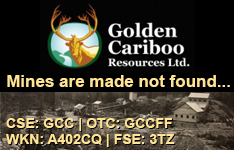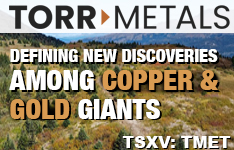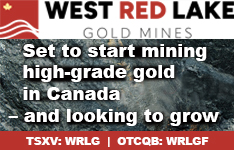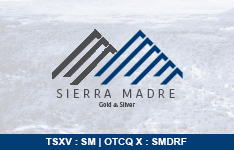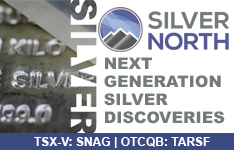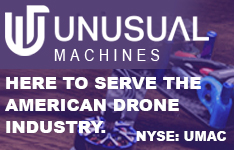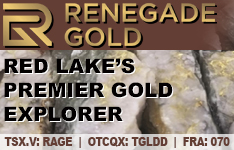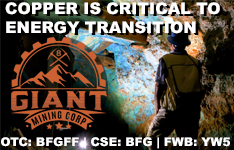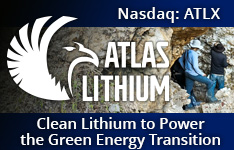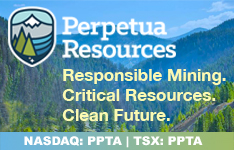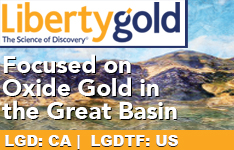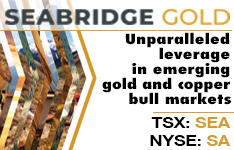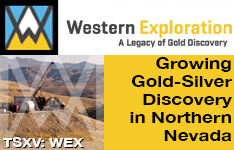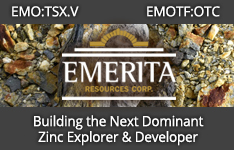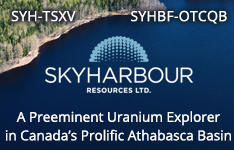Geoff Meacham: We were very bullish on the biotech group in 2010 and 2011. Fundamentals are still very good, but I would say we're more cautious on the performance of the group for all of 2012. One of the things we pointed out in our 2012 Global Biotech Outlook is that the tone of the group before 2012, literally last fall, was very negative. We offered a couple of ideas of what could change the sentiment very positively. It turns out that a lot of that stuff actually happened. Deals happened like the Bristol-Myers Squibb Co. (BMY:NYSE) $2.5 billion (B) acquisition of Inhibitex Inc. (INHX:NASDAQ). That caused a lot of buzz at our J.P. Morgan Healthcare Conference that we just had in San Francisco.
The second thing that happened is that a lot of drug launches that previously were thought to be left for dead, for example, Dendreon Corp.'s (DNDN:NASDAQ) Provenge (sipuleucel-T) for prostate cancer and Human Genome Sciences Inc. (HGSI:NASDAQ) Benlysta (belimumab) for systemic lupus, have actually rekindled and we have seen an uptick. Dendreon's most recent quarter was good as was Human Genome's. The U.S. launch of Regeneron Pharmaceuticals Inc. (REGN:NASDAQ) is straight out of the gates following FDA approval in November was good. I wouldn't say that the attitude or tone toward drug launches is strong right now, but it's not nearly as negative as before.
The combination of those things has really set the group on fire to start the year. Our message to institutional clients is that we would not broadly chase the group, however. We still feel like the European economic uncertainty is likely to be a little bit of a headwind. The upside potential to revenue estimates is really what drives a lot of these stocks, and it looks more limited this year than in prior years. That's our sector tone. It's good, but not very bullish for this year.
TLSR: Geoff, is there a sweet spot in the market currently as far as therapeutic focus?
GM: Yes, it is hepatitis C virus (HCV). We've been talking about that for about two years, and it is still going to be a tremendous source of interest and innovation, no doubt about it. I think what's attracted a lot of people is that you can derisk a hepatitis C asset relatively early. A phase 2 study with a few hundred patients, or maybe even fewer than 100, can inform the design and likely outcome of a larger phase 3 study. We've seen Pharmasset Inc. [acquired by Gilead Sciences Inc. (GILD:NASDAQ) for $11B on Jan. 17, 2012] and its robust opportunity with PSI-7977 in hepatitis C. Then in relatively small groups of patients, we've seen Inhibitex with its INX-189 in phase 2. My suspicion is that Idenix Pharmaceuticals Inc. (IDIX:NASDAQ) is probably another [acquisition] candidate, given that it is in hepatitis C and is in the so-called nuc (nucleotide or nucleoside analog) class space with IDX-184 in phase 2b. This nuc space is really hot right now. So hepatitis C is a sweet spot.
I also feel like orphan diseases are a sweet spot. In this case, ViroPharma Inc. (VPHM:NASDAQ) with its Cinryze (complement C1 esterase inhibitor) for hereditary angioedema (HAE) has had a huge run of late. I think it probably still has some upside although more limited than a name like an Alexion Pharmaceuticals (ALXN:NASDAQ), which had a big, big move last year. Alexion has its orphan disease drug Soliris (eculizumab) for paroxysmal nocturnal hemoglobulinuria (PNH), and it was also approved for its second indication atypical hemolytic uremic syndrome (aHUS). We also like the potential of Alexion's new asset ENB-0040 (asfotase alfa) for the very rare disease hypophosphatasia (HPP) that came with the acquisition of Enobia Pharma Corp. That looks pretty robust.
Then on the smaller-cap side in orphan diseases, InterMune Inc. (ITMN:NASDAQ) is a stock that we've liked a lot. It has really been decimated. The performance this year is okay, but last year it dramatically underperformed on fears of a weak launch in Europe for its drug Esbriet (pirfenidone) for idiopathic pulmonary fibrosis (IPF). But it does look like the patient demand is there.
Hepatitis C and these orphan indications are two therapeutic categories I would point to that could continue to do well in 2012.
TLSR: What about the sweet spot in market cap?
GM: In large cap, and by large cap I really mean the biggest ones, there is Celgene Corp. (CELG:NASDAQ), Amgen (AMGN:NASDAQ), Biogen Idec Inc. (BIBB:NASDAQ) and Gilead Sciences. We also like Vertex Pharmaceuticals Inc. (VRTX:NASDAQ).
TLSR: Going back to HCV for just a moment, what is it about the disease that allows you to derisk a proposed drug so early in a phase 2 trial powered with as few as 100–200 patients, say compared to an oncology candidate?
GM: When you have an oncology asset, most companies will look at a drug in a variety of tumor types. So they will do a phase 1 all-comers' trial that could include breast cancer, colon cancer and lung cancer, and these are going to be very, very refractory patients. Usually, you'll see the drug have some activity, and that guides you for the next trial, which would be a dose-finding study. Then you try to figure out if there's a subset within a certain tumor type that looks good. Then your larger phase 3 trial is oftentimes based on tenuous assumptions when it comes to either overall survival (OS) or progression-free survival (PFS). A lot of companies will go into a phase 3, having very good response rate data, but not really knowing whether that is going to lead to PFS or OS net benefit.
With hepatitis C in a phase 1 or phase 2 trial you gain experience in a much more finite number of variables, and so you can figure out who your best and worst responders are. Oftentimes, if you have data in 100 patients, that actually turns out to be very predictive of something in a much larger phase 3 setting of 500 or 800 patients. Although the rate of clinical trial failures is probably higher due to unforeseen toxicities, you can derisk on the efficacy side, in other words, whether your drug works or not. You can determine that very early in hepatitis C. That's a lot different than, say, oncology or multiple sclerosis or other biotech markets.
TLSR: Alexion's Soliris has received approval for a new indication, aHUS, as you've mentioned. You indicated this stock has done quite well, and indeed it is up 72% over the past 52 weeks. Can this orphan disease drug be a growth product?
GM: What I think is fascinating with the Alexion story is simply the mechanism of complement inhibition. It's very clear that it's not just PNH and aHUS, it's an entire alphabet soup of other indications that could include optical disease neuromyelitis optica (NMO) and myasthenia gravis. Other diseases talked about include cold agglutinin disease (CAD), dense deposit disease or even kidney transplant. A lot of them are ultra-orphan, meaning fewer than 5,000 patients in the world, but there are a number of them.
But the mechanism is crystal clear. Its complement is driving the pathology. So there is a blueprint. But what the Street has to get comfortable with is that the drug will work in these other indications, which is why we like the stock this year. NMO is often associated with a central nervous system disorder, but it is complement-mediated. By mid-year, I think we'll have some visibility on whether it will work with myasthenia gravis or kidney transplant.
TLSR: I think continuing approvals for new indications is a factor we have probably overlooked in the past when looking at products.
GM: I think that's right. There's a blueprint really for new indications. What Alexion did with PNH was to get approval in the U.S., Western Europe and then it marched to Eastern Europe, then to Japan and then to other emerging markets, countries like Brazil and Russia. My suspicion is that because it has PNH approval in dozens and dozens of countries, it would make sense that reimbursement discussions for the next indication, aHUS, would be a little easier.
TLSR: How do you start with these new indications in orphan drugs?
GM: It's interesting. Because these indications are ultra-orphan, you can't simply run a trial on 100 patients. In fact, the approval pathways for Soliris in PNH and aHUS were really based on one lead phase 2 trial that showed a first hint of efficacy. Oftentimes, these are centers where one physician, who has an interest in a certain orphan disease, enrolls some patients. The next study would be not that much bigger, say half a dozen centers across the world and maybe fewer than 50 patients. That's the good thing about ultra-orphan diseases; the incremental expenses are fairly modest to run and execute a trial; however, it is not a drug until you move that first proof of concept dataset across the goal line.
TLSR: You've mentioned several companies, but can you briefly tell me what your best ideas are?
GM: Our favorite stock for this year in large-cap land is Gilead. Admittedly, we've liked the stock for a few years, and so for full disclosure, this has been a top pick for a couple of years. I think the reason why we kept it for 2012 was simply that we think the Pharmasset drug PSI-7977 is going to yield a lot of data over the course of this year, and that's going to give the Street comfort that it will be a very big drug in hepatitis C. In the next two years, this company could have $2B, $3B or $4B in hepatitis C revenues that weren't originally in the model. As a result, I think you'll see some multiple expansion. In fact, the stock is up and pretty robust year-to-date (YTD), and the multiple has gone from about 9 to 11. It's actually still cheap because the group has something in the 14–15 multiple range. So it's still a discount to the group. So I'm actually very comfortable still buying it up here where it's already up 15–16% YTD. So that's one of our favorites in large-cap biotech.
The other one that we like is Celgene, another large cap. It's had a good year so far, up about 9%. Its lead drug is Revlimid (lenalidomide) which is indicated for multiple myeloma, a type of blood cancer. It's been on the market since 2006 in the U.S. and 2007 in Europe. Management has executed very well. The drug is unpartnered globally, and it is just launching in Japan, which means high margins. I think the gross margins on this drug are in the 97% range. But the big driver for Revlimid in 2012 is its approval in first-line multiple myeloma. It has a 10% share in Europe across the continent, but is moving toward between 30–40% in the next year to 18 months, and that will be a big driver of revenue growth. That pretty much is the crux of our bullish thesis on Celgene. There is more to the pipeline in terms of news flow this year than in prior years, and pipelines obviously do matter for these stocks.
Celgene's drug apremilast (CC-10004) will have some phase 3 data in psoriatic arthritis. This drug is not in anyone's model, including ours. It is also filing for another myeloma drug, pomalidomide (CC-4047, Actimid). Then there will be new indications for Abraxane (paclitaxel injection), which is under review at the Federal Drug Administration (FDA) for lung cancer. That could come by year-end. So there is a lot to think about in terms of underlying fundamentals, within the pipeline and also regulatory events. There is a lot of action event-wise.
TLSR: Is apremilast an anti-tumor necrosis factor (TNF) agent?
GM: It's an oral drug similar to an anti-TNF. The issue is that the efficacy we've seen in phase 2 in psoriasis looks a little bit south of where Humira (adalimumab) is from Abbott Laboratories (ABT:NYSE) and closer to Enbrel (etanercept) from Amgen Inc. (AMGN:NASDAQ), but those two drugs are injectable. The commercial rationale is that if these have efficacy that's close enough, they could go upstream.
TLSR: On the smaller-cap side, you mentioned InterMune that had been beaten down.
GM: The reason why the Street was so skeptical of this stock last year is that people did not like drug launch stories, and this was a launch story for Esbriet for IPF in 2012. People were really worried about the economic situation in Europe, and this drug is launching exclusively in Europe. But IPF is an officially unmet medical need, and Esbriet is the only thing approved in Europe for IPF. The product was approved officially mid-2011, and it got reimbursement in the first country out of the gates, which was Germany, in September. So it is rolling out reimbursement all across the big five countries in Europe. But what we saw in early January was that the sales were in line more or less. Our target on this stock is $45. I think this one does have a lot of upside potential.
TLSR: Another one?
GM: The only other name I'd highlight in small-cap biotech is Idenix, which is in the hepatitis C space. The company released data on its nuc, IDX-184, at our J.P. Morgan Health Care Conference that showed that it was safe. But about a year and a half ago, the company released data on a study it undertook of IDX-184 in combination with a protease inhibitor IDX-320. There was some liver toxicity, and the FDA didn't really know whether that was due to 184 or to 320 or to both. The company went on full clinical hold on both the assets. Then it went to the end of the earth last year to show the FDA that in fact the toxicity was due to 320 and not 184.
The stock this year is up 89%. The reason for that is because if Inhibitex was bought for its nuc—and by the way there were five bidders for Inhibitex—then it is very likely that other companies would be interested in Idenix. What's different about Idenix is, instead of having one drug like Inhibitex, it has four. It has IDX-184, and it has two other nucs. And it has IDX-719, an NS5A inhibitor that's just starting phase 1. It also has a very good reputation in the field in terms of chemists and basic scientists. And it has intellectual property, dozens of patents. Officially, Inhibitex doesn't have a single issued patent. Now that we have the data for IDX-184, there is a rationale for that company being bought for more than Inhibitex, which was $2.5B. That's one that we like a lot. I think the strategic attraction of this is clear. There are multiple buyers in the hepatitis C space, and this company has as good an asset as anyone else in the space with the exception of Pharmasset, which is clearly in the lead.
TLSR: Bristol/Inhibitex is obviously what has driven Idenix, which has a four-week return of 84%. Plus, it has tripled from 12 months ago. What is your target price on Idenix?
GM: During the J.P. Morgan Health Care Conference, we raised it from $12 to $25. So it's another $11 of upside.
TLSR: Geoff, I've enjoyed this greatly.
GM: Well, thank you so much.
Geoff Meacham joined J.P. Morgan in 2004 as a senior biotechnology analyst. He previously was an equity analyst at UBS following early stage biotech and life science companies for about four years. Geoff has been ranked for the past five years in the Institutional Investor poll, including a #2 ranking for the past four years. His research coverage spans from large-cap biotech companies with a global reach to small, development stage companies. He has also worked in the pharmaceutical industry for two years in a R&D capacity and he holds a Ph.D. in Cell Biology and a Bachelor of Science in Biology/Microbiology.
DISCLOSURE:
1) George Mack of The Life Sciences Report conducted this interview. He personally and/or his family own shares of the following companies mentioned in this interview: None.
2) The following companies mentioned in the interview are sponsors of The Life Sciences Report: None. Streetwise Reports does not accept stock in exchange for services.
3) Geoff Meacham: I was not paid by Streetwise for participating in this story.
4) J.P. Morgan: Click here for J.P. Morgan disclosures.












